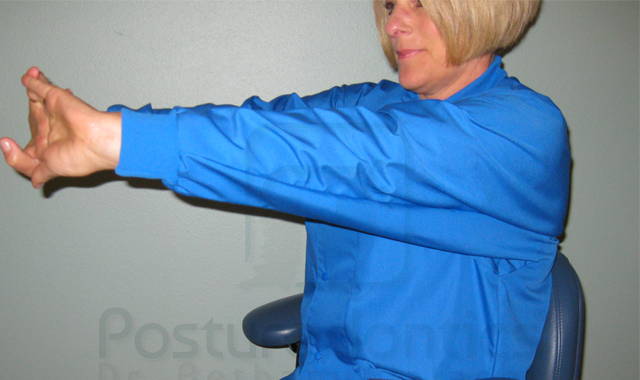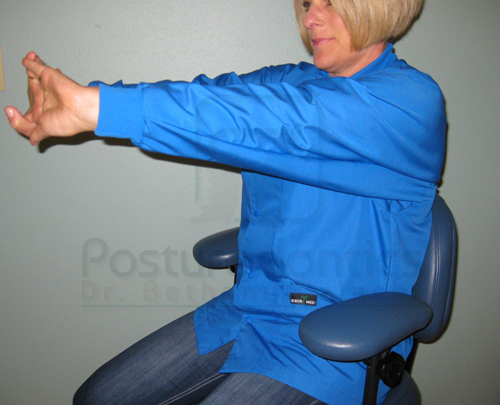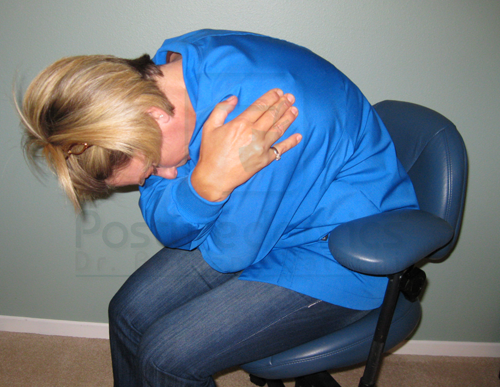Resolving upper back pain in dental professionals
Solving the common problem of back pain in dentists requires identifying the correct cause first.

Myofascial pain syndrome is a little recognized diagnosis, but one of the most common causes of upper back pain. After ruling out what would seem the least likely (but is actually one of the most common) cause of upper back pain - scalene trigger points - one can turn one’s attention to the more obvious players.
These muscles are actually located in the same area as one feels pain: rhomboids, middle trapezius and lower trapezius. Symptoms of trigger points in these muscles include tightness, stiffness and ache in the shoulder blade or interscapular area. Pain is usually worst toward the end of the day. Sleep patterns can be disturbed, and bruxism is common. Of course, one should also rule out the non-musculoskeletal etiologies: gall bladder and pancreatic disease.
Related article: How shoulder pain can cripple your dental career
Recent research shows that these “stabilizing” muscles are hard-wired to your sympathetic nervous system, so they respond strongly to mental stress or anticipated stressful activities. When the fight or flight signal is received, they contract in anticipation of the life-threatening fight that (hopefully) never happens. The muscles are left in a contracted state and easily develop painful trigger points.
Add to this the physical stresses on these muscles from the ongoing ergonomic challenges in the dental operatory, and you have the perfect storm for a vicious pain cycle: physical and mental strain from the job leading to muscles tensing, which leads to the development of trigger points, which leads to pain, which finally leads to mental stress! This is not your muscles being dysfunctional, but a normal physiologic response to stress whenever the muscle is sustained beyond its usefulness to a point of pain. Drs. Gerwin and Whyte Ferguson refer to this syndrome as SITS (sympathetic intrafusal tension syndrome) - a much more accurate descriptor than “chronic strain.”
Rhomboid stretch

The medical approach to this syndrome is usually medicine (NSAIDS, anti-depressants, muscle relaxants) and rest. Unfortunately, this is often a band-aid approach since the underlying exacerbating factors are not being addressed.
When incorporating interventions, remember the proper sequence for treating chronic pain.
Ergonomic interventions
A common cause of lower trapezius trigger points is when the operator or assistant cannot get his or her knees under the patient chair and ends up leaning or bending forward over the length of his or her leg. If your knees cannot be positioned under the patient chair without lifting the arms out to the sides, operators should straddle or use runner-up or saddle-stool positioning to gain close proximity to the patient and preserve the best operating posture. Learning to control the occlusal plane to allow an upright posture is essential to a dentist’s career longevity.
Continue to page 2 to see self-therapies...
Avoid rounded shoulders and reaching forward while sitting. Loupes with proper working distance will prevent drifting forward into slouched posture, while armrests are a must to minimize muscle strain while reaching in front of you to work.
Change positions every 30 minutes if possible. This moves the workload from one group of muscles to another.
Self-therapies
Down regulate your nervous system. Purely physical treatment often provides only temporary relief since the emotional or stress component must be modified. Since these muscles are hot-wired to the sympathetic nervous system, identifying and reducing stressors can do wonders for long-term management. Progressive relaxation and abdominal breathing exercises are also excellent therapies.
Trap stretch

Resolve your trigger points. Put 1-2 tennis balls in a tube sock, tie the end and place in the freezer. On the floor, lie on one cold tennis ball (between scapula and spine) or two balls (one on either side of the spine) and hold for 30 to 60 seconds. You may also self-treat your trigger points using a Backnobber® tool, which will treat many areas that cannot be treated with tennis balls. Follow self-treatment of trigger points with a gentle 60-second stretch. Releasing lower trapezius trigger points is often the key to releasing upper trapezius trigger points.
Related article: 8 things dental professionals need to know about exercise
Stretch problem muscles. Perform gentle stretches to the painful muscles up to three times daily (Images). Tight chest muscles can perpetuate the problem, so pectoralis stretches are also important.
Dr. Valachi offers an evidence-based “Wellness System for Dental Professionals.” DPR readers may receive a special discount by entering coupon code DPRWell here.
Oral Health Pavilion at HLTH 2024 Highlighted Links Between Dental and General Health
November 4th 2024At HLTH 2024, CareQuest, Colgate-Palmolive, Henry Schein, and PDS Health launched an Oral Health Pavilion to showcase how integrating oral and general health can improve patient outcomes and reduce costs.
Episode 31: Dentsply Sirona Implant Announcements
September 30th 2021DPR’s Editorial Director Noah Levine sat down with Gene Dorff, Dentsply Sirona’s group vice president of implants and Dr. Dan Butterman to review several big announcements the company made in the arena of implants during Dentsply Sirona World 2021 in Las Vegas.